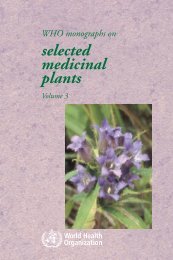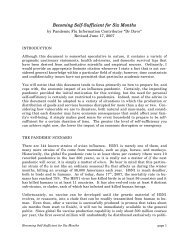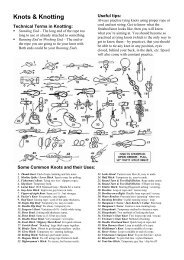You also want an ePaper? Increase the reach of your titles
YUMPU automatically turns print PDFs into web optimized ePapers that Google loves.
COMMON EDIBLE MUSHROOMS<br />
mycologists have confused the two kinds and have been poisoned<br />
as a result, common sense directs us to avoid both species.<br />
The caps are from 4 to 12 inches wide, those the size of a dinner<br />
plate and weighing more than a pound being not at all rare in a<br />
good season. In young plants the cap is spherical, with the margin<br />
attached to the stem, but later it becomes convex and finally almost<br />
flat. The surface of young specimens is nearly smooth or coarsely<br />
fibrous, and as the cap expands the fibrous outer layer cracks into<br />
large and prominent brown or white scales. The gills, free from the<br />
stem, are white when young. Those of the mature Lepiota morga.nl<br />
assume the pale green color of the spores; those of Lepiota rachodes<br />
remain white or turn a dingy tan. The stem is 1/2 to i 1/2 inches<br />
thick at the top, increasing in diameter toward the base, where it<br />
is enlarged into a spherical bulb. It is from 4 to 10 inches long, its<br />
length seldom exceeding the diameter of the cap, and it bears a<br />
prominent ring above the middle. Fairy rings of L. morgani more<br />
than fifty feet across have been found, made up of dozens of specimens,<br />
each nearly a foot in diameter.<br />
GENUS Marasmius<br />
<strong>Edible</strong> and delectable: MARASMIUS OREADES (Fairyring<br />
Mushroom)<br />
Marasmius means withered or shriveled, and the name was applied<br />
to this genus because, unlike most mushrooms, these plants<br />
wither in dry weather but do not die, and when moistened they<br />
revive, regain their original size and shape and freshness, and continue<br />
to shed spores. Colly bia confluens also has this habit, as Figure<br />
18 shows. This ability is of some benefit to them in that it<br />
enables them to survive periods of drouth that kill most other species.<br />
The specific name oreades means mountain nymphs, a poetical<br />
allusion to the fairy rings they form (Figures 35 and 34 and Plate<br />
4A). Many kinds of mushrooms form such rings, but Marasmius<br />
oreades does so commonly. On pages 6-7 you may read how and<br />
why these rings develop.<br />
60
















